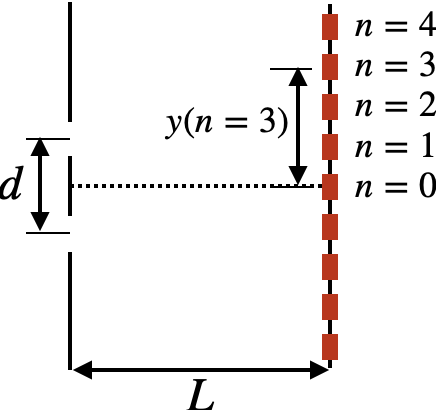2.
Two-Slit Interference

The formula we want is $$y(n)={n\lambda L\over d}$$ where
- $\lambda$ is the wavelength of the light, usually measured in nanometers ($1\u{nm}=10^{-9}\u{m}$)
- $d$ is the distance between the slits (often measured in millimeters: $1\u{mm}=10^{-3}\u{m}$)
- $L$ is the distance from the slits to the screen where the pattern is projected
- $y$ is the distance from the center of the screen to the $n$th bright spot
- $n$ is the order of the bright spot you want to find
Possible pitfalls
- Confusing the different lengths in the problem
- Forgetting to convert all lengths to meters
- Forgetting that $d$ is the distance between the slits, not the width of each slit. (That would be $a$.)
- Confusing this with Diffraction Patterns, where $y$ is the position to the dark spots
Recommendation
Start the problem with a table like
| $\lambda=$ | ___ |
| $d=$ | ___ |
| $L=$ | ___ |
| $n=$ | ___ |
| $y=$ | ___ |
fill in the values you know, and indicate the value that you need. Convert all of these to meters, substitute into the equation above, and then solve.